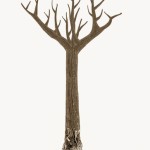What do nonprofit arts people mean when they say ‘the business model is broken’? I’ve heard this phrased decried ad nauseum in the US for at least the past three years. It was a working hypothesis before the economic downturn; now it seems to be a statement of fact. So what model are we talking about? The American ‘nonprofit’ model for the arts? A particular ‘business’ model used by individual organizations? A Stanford business school professor once gave me the following definition: a model is a representation of your beliefs about causality. Perhaps more interesting questions would be, what beliefs about causality underpin our ‘model’, and are they still valid?
Last year, in his post, One business model to rule them all, Andrew Taylor referenced a comment Clara Miller of Nonprofit Finance Fund made at an Americans for the Arts conference in 2010. She said, “There is one business model: reliable revenue that meets or exceeds expenses. Any questions?†I was at that session. A lot of people chuckled when she made the comment.
And then I remember thinking: So, which revenue sources are reliable at a nonprofit arts organization? Government arts programs across the country seem to go into duck and cover mode on a regular basis; corporations are often skittish—lavish one year and austere the next; foundations are overly cautious and generally dole out funds one year at a time, being careful to avoid enabling ‘dependency’; fewer and fewer people want to commit to buying a season’s worth of tickets up front; single ticket buyers are notoriously unpredictable; and individual donors are as varied as … well, individuals: some are dependable and loyal but many are fickle and elusive.
It seems like most arts organizations start each year with very little of their income committed and spend much of the year on pins and needles waiting to see if they will hit their revenue targets. Are we operating under a delusion that there is such thing as ‘reliable revenue that meets or exceeds expenses’ in the arts? And if so, is there a corresponding faulty belief that underpins our business model? For instance, that the arts are valued by our society?
Is this what we mean by ‘the model is broken’? Or is it something else? I would love to hear reflections on the ‘broken model’. What’s broken? How do we fix it?
Desolate Tree image from by lolloj licensed by Shutterstock.com. Quote from Waiting for Godot by Samuel Beckett.


